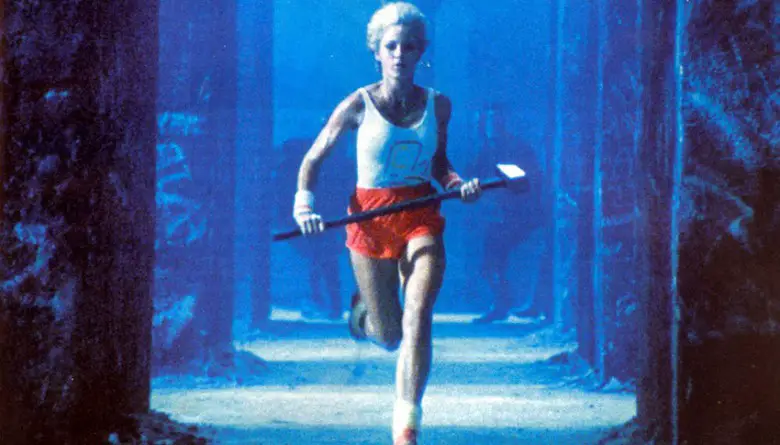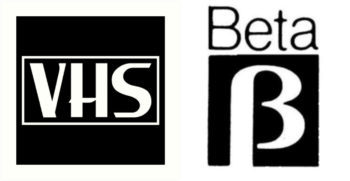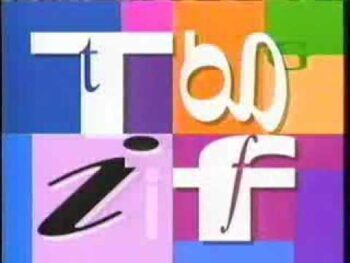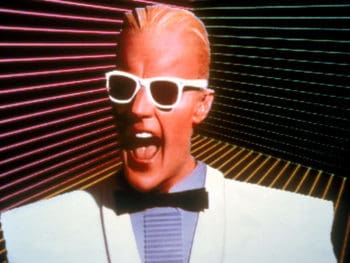
There have been many iconic commercials over the years but which one stands above them all?
The Apple “1984” Macintosh commercial debuted in January 1984 during Superbowl XVIII. It would end up changing the way commercials and marketing would be done and helped to change the Superbowl into an even bigger event.
What Got Us To Apple’s “1984” Commercial?
Quick, who won the Superbowl last year? What was the score? How about three years ago? We all know the spectacle that is the “Big Game” but the event itself has grown larger than actual football and it has become a showcase for brands to strut their stuff in the most expensive commercial block on T.V.
The Superbowl commercials have, arguably, become bigger than the game itself – especially if it’s a lackluster year or game. No matter who is playing, and whether you like the teams or not, there has no doubt been commercials that you’ve remembered for years, more than the game itself.
Case in point: Without looking it up, I’m positive you can’t tell me who won the Superbowl in 1995 but there’s no doubt you still remember the Budweiser Frog commercial. How about the winner in 1999? Nothing? Well, you’ve never forgotten the “Whassup” commercial from that year.
With over 100 million people usually just watching in the U.S alone, advertisers have to pull out all the stops in order to; make an impact, get their brand elevated, and compete against other epic commercials. And over the years we’ve seen some pretty significant commercials which went beyond just promoting a brand, but made a mark on the culture.
Besides those two Budweiser commercials, some other standouts over the years include:
- “I’d Like To Buy The World A Coke”- Coca-Cola, 1971 (shout out Don Draper)
- Mean Joe Greene – Coca-Cola, 1979
- Cindy Crawford commercial – Pepsi, 1992 (you know which one I mean 😉
- “The Force” – Volkswagen, 2011
- Puppy love/Clysdale horse – Budweiser, 2014
- “Where’s The Beef?” – Wendy’s (Check out my article all about this amazing commercial)
- Snickers Betty White – 2010
There’s clearly a ton more, and you may have your own personal favorites, but this was to just show a sampling of commercials that were considered “water cooler” talk the day after the game – and long beyond that too. As mentioned, these commercials can shape culture. You can learn as much about the progression of society and culture by just looking at Coke ads over the years as you would reading an encyclopedia
But during one Superbowl, an advertisement appeared that changed the trajectory of marketing and the Superbowl itself forever.
This is a look back at Apple’s iconic “1984” commercial to reveal the Macintosh.
The Story With Apple Up To This Point
So I’m sure you know the story of the development of Apple Computers, but you might not know that the company probably wouldn’t have existed if it wasn’t for a toy whistle inside a box of Cap’n Crunch Cereal. I’m serious, check out my article all about how this led to the creation of Apple computers.
But here’s a little more on how things progressed after Apple got up and running. Their first foray into the computer/tech world was the Apple I which was more like a computer kit that was separate pieces that you could attach together. The big thing was that you could now attach a keyboard and when you typed, it appeared on a monitor. This was never possible before but Steve Jobs hated that it was such an unorganized device.
The Apple II would solve this problem by encasing everything giving the whole computer much more of a clean look. Apple was also making big advancements in computing including the use of a mouse and graphics that had never been seen before. They also stole an idea from Xerox that had an actual user interface where you now had a “desktop” on your screen that you could drag files around.
You can watch this video demonstration from 1982, and remember, this user interface had never existed before. What you are watching is what Steve Jobs would have and what helped propel the future of Apple.
Hopefully, you’ve read the Walter Isaacson biography on Steve Jobs as it’s an incredible look into the guy and the development of the company. That’s one big takeaway here is if Xerox had pushed this idea of “bit mapping” where you could see images and folders on the screen, and Jobs hadn’t basically stolen it, you’d probably be reading this on your Xerox phone right now.
Up to this point, computers were more for techies and not for the everyday person. Jobs wanted to change this and introduce a computer that could find a place in every home in America. He wanted it to not only be more powerful but user-friendly and meant for the masses.
This idea would become the Macintosh.
The State Of Advertising Up Till 1984
It’s not that commercials didn’t have as big as an impact as they do today, it’s just that the approach was different. When advertising first started at the dawn of television, no one knew what the best approach was. A commercial for a watch would just show the watch and it was basically like, well, here it is.
If you’ve been a big fan of the brilliant show Mad Men, you know the 60s was the time where advertising exploded – in all mediums including TV, print, and radio. What these people were doing now was selling you the idea of the product and creating a feeling that went along with it. If they did their job right – and the often did – you found yourself desiring a certain product because of the feeling and effect that went along with it.
You weren’t buying a fancy a new dishwasher, you were buying the idea of convenience, modernity, and “keeping up with the Joneses”. You weren’t as much buying a product as you were buying a lifestyle.
So this is still at the core of advertising, but when it came to television advertising, the ads were pretty simple. It’s not to say they weren’t effective, this can be seen in the “I’d Like To Buy The World A Coke” ad from 1971. It conveyed a message, and a movement, and was very effective. But it was basically just people singing on a hillside – there wasn’t a lot of production value to it.
Same with the “Mean Joe Greene” commercial. Again, iconic and effective, but it was just two people standing in a hallway. These commercials definitely met their intended agenda (far exceeding them actually) but pretty much all commercials looked the same.
Was there a new approach that might be more effective?
How Would Apple Market The New Macintosh?
Do you want to be a pirate?
This idea of being a pirate, or rebel, was at the core of Apple originally. Jobs and Wozniak were all about the counterculture and the focus was on being hackers. This hacking/counter-culture aspect is what Jobs wanted to convey in a commercial to launch the Macintosh.
Even though it debuted in the Superbowl of January 1984, the inception of the “1984” commercial goes back to the start of 1983 and this was the time where the battle from computing between Apple and IBM was really heating up.
At sales conferences in early 1983, Jobs was already talking about IBM trying to monopolize the computer industry along with the aspect of being Big Brother from George Orwell’s “1984” – and he wanted a commercial that would reflect this well. He wanted something that would “stop people in their tracks”, he wanted a “thunderclap”.
This meant turning to advertising agency Chiat/Day, and the ad was put in the hands of a hippy type surfer named Lee Clow who was the creative director in their office based in Venice Beach, California. He had also been playing with this idea of the book “1984” and early on had the tagline: “Why 1984 won’t be like 1984”. Since this idea of an Orwellian future conjured up images of a dystopian future, they thought this was the tone and look that the commercial needed.
Enter Ridley Scott
Hopefully, you’ve seen the iconic movie “Blade Runner” which is set in that dystopian type future but this would help shape the look of the “1984” ad. Clow had put together a storyboard for a sixty-second ad that would look like it was out of a sci-fi movie that included a rebellious woman outrunning the Orwellian thought police and throwing her sledgehammer into a screen that was showing a Big Brother type character reciting a mind-controlling speech.
Jobs loved the whole idea as it really captured the movement going on regarding personal computers. The original counterculture in the 60s viewed computers in a Big Brother type scenario where they would become instruments used by governments and big corporations.
IBM was one of those companies they resented and Apple had always been built on the back of being a group of rebels or pirates. The Macintosh would be the warrior – like a Luke Skywalker – that would stand in the way of the big galactic empire, or IBM. Jobs viewed himself as a rebel so this was exactly the idea he wanted to convey with the Macintosh.
Apple had become very big, very quickly and this “1984” ad would also be a way for Steve Jobs to reaffirm to the world – and himself – the self-image of his non-conformist rebellious persona. They wanted the ad to resonate with rebels and hackers which opposed the big IBM “Big Brother” type movement that was going on. Computers didn’t have to be tools for the oppressors, they could be for individuals and that’s what the Macintosh represented.
Since Blade Runner had captured this tone so well, they turned to director Ridley Scott to put the commercial together. Others at Apple were skeptical of going this route but Jobs said they needed something revolutionary. He wanted Apple to be like what Pepsi was becoming. The Pepsi taste test challenges were creating more of a cultural identity for Pepsi and they were becoming more than just a cola.
He wanted a movement.
Having To Spend The Big Bucks
This was not going to come cheap, and the commercial had an unheard of budget of $750,000 – and that was just to film it. The next question is how do they get this in front of the most eyes possible? Since this was the early 80s there were basically only three networks, so there was a good chance that most things on TV had a chance to be seen by 1/3rd of the viewing public.
This wouldn’t be good enough, however. What was an event that had the most eyes on it at one time? Looking at the calendar they realized SuperBowl XVIII was taking place in January. This would be the perfect time to showcase the heroines’ hammer smashing the screen as the Big Brother announces “We Shall Prevail!”.
The commercial was ready and when Jobs previewed it at the December 1983 sales force meeting, they went nuts and loved it. A few heads at Apple didn’t feel the same way and didn’t know what the hell they were watching – which caused them to panic. They asked Chiat/Day to sell off the two commercial spots which cost a cool $800,000. If you convert that for today it’s almost $2 million which is crazy to think about for back then before the commercial spots became so expensive.
So Apple had two time-slots booked for the Superbowl and the heads at Apple wanted both sold off. The agency was able to sell off the second thirty-second time slot but when it came to the main sixty-second slot, they bent the truth a little. Chiat/Day knew they had something special on their hands and as advertisers they wanted people to see it, so they told Apple that they had tried to sell off the first spot but were unable to. In reality, they had never even tried.
Debuting “1984” To The World
Superbowl XVIII featured the Oakland Raiders vs the Washington Redskins and by the third quarter, it was turning into a bit of a blowout. Early in the third, Oakland had just scored a touchdown putting them up 28-9 and the viewing audience, expecting a replay, had their screen go black for about 2 seconds.
Then some eerie music started playing.
Then starts the black-and-white image of a marching army of drones with this ominous music playing leading to the ad you’ve no doubt seen a countless number of times. This ad blew the 96 million people who viewed it away as it was unlike anything they had ever seen before. I feel this and still holds up today and is massively impactful – you can imagine what it was like back in ‘84.
The ad was a massive sensation and more people were talking about it than the actual game itself. It was so big that that evening after the game, all three networks, and fifty local stations were airing news stories all about the ad. It basically was going viral before “going viral” was even a thing. Can you imagine if social media was a thing back then?
This ad astonished everyone and would eventually be selected by TV Guide and Advertising Age as the greatest commercial of all time. With all the years that have still gone by I really believe it remains the greatest ad ever.
Marketing Changes Forever
The funny thing is the “1984” ad originally had poor results with test audiences. The average commercial score when testing would be around 29. “1984” got a 5.
Among other things, it never even showed the product they were talking about – and this was the whole point and proof that market testing could be irrelevant. Jobs wanted to sell people on something they didn’t even know they wanted. I’m sure you had never thought about wanting an iPod, iPad, iPhone, or Apple Watch but ended up with one – and this was the basis for what Steve Jobs wanted to do with Apple.
Jobs, Apple, and Chiat/Day had created a feeling and a movement which is at the core of advertising. The Apple “1984” commercial may have been the origin of “water cooler talk” and it was something you dare not have missed in order to not feel out of the loop.
This commercial changed what advertising could be. Commercials could be as epic as a movie and companies were free to create movements and cultural statements in their ads. 1984 allowed creativity to finally run wild and you could now do whatever was needed to grab hold of the publics attention.
The Superbowl Changes Forever
The Superbowl was always a big event, but when the progression of advertisements amped up after “1984” it became a showcase. Advertisers would now save their very best for the big game knowing how important it was to deliver a hit.
All companies after Apple were basically trying to match what they had done with “1984”. Even if they would mostly fall short, they could still make a massive impact and steal the show away from the game itself. Superbowl games can be pretty hit-or-miss, there have been some classics over the years, but a lot come up a bit short.
With the commercials now becoming front and center, it didn matters if the game sucked, you were going to be entertained by the ads. It was a no-lose situation for the viewer and if the game was epic then so much the better.
The Superbowl would then turn into an event that would attract as many non-sports fans as it did football fans. The progression of the half-time show would further cement this as – in all honesty – the game really has taken a backseat to the event itself.
For probably the only time during the year no one changes the channel or leaves when the Superbowl commercials come on – dare you miss something historic. Movie studios have now saved their best trailers to air during the Superbowl and it’s basically become a four-hour event where you can’t go to the bathroom.
Wrapping It Up

Hopefully, now you can see how Apple’s “1984” commercial was the definition of ground-breaking. Not only did it launch Apple and Steve Jobs into the stratosphere but it changed the way companies would now market their products.
It allowed for commercials to be events and it single handely transformed the way the Superbowl was approached and presented.
Not bad for a bunch of pirates.



